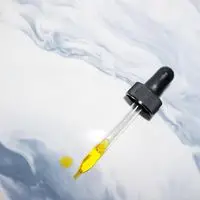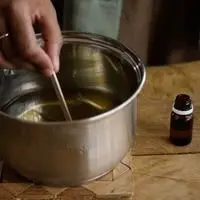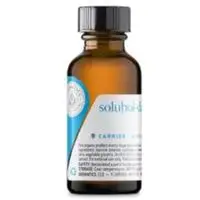How to dilute essential oils with water. If you need to use essential oil, make sure to dilute it before any topical application. Here are a few methods that might help you dilute your essential oil.
But why do we need to dilute it?
The reason is that the essential oil is very potent, and without dilution, it may cause reactions on sensitive skin. Oil and water are always hard to mix no matter how much you shake, stir or heat it.
That’s why a third reagent will always be needed to make the bond between them. Both are opposite in terms of polarity.
According to science, dissolve is like, so a non-polar oil can’t get dissolved with a polar oil without the intervention of an emulsifier or solubilizer.
How to dilute essential oils with water
Use no more than two percent of the essential oil on the skin. This is typically around 10–12 drops of oil in a one-ounce bottle. If you do have sensitivities, small children, or pets, it’s always easier to use less and reapply if desired.
So now you know the basic idea behind mixing.
Let’s start the mixing process.
Using Emulsifiers
Emulsification agents tend to produce an emulsion. They get mixed in a mixture of oil and water.
The emulsion behaves like a mixture of essential oil and water.
In this way, the scent will last longer when used in a diffuser. If you don’t know which emulsifier needs to be added, try using one of these.
- Aloe Vera gel
- Baking soda
- Apple cider vinegar
- Witch hazel
- Rubbing alcohol
Emulsifiers need proper blending when mixed with water and oil mixture.
They are also opting for oils having high molecular weight. They break down the oil and mix it with water.
Dilution Guide
If the essential oil has no label, then you can follow this easy dilution guide.
- For 1-3% personal care solution, add 6-18 drops of essential oil to 1 ounce of water. Add an ounce (3oml) of emulsifier to the mixture. Start mixing and blending the mixture.
- Mix it until a homogenous diluted mixture is formed.
- For the home care solution, add 18 drops of essential oil to 1 ounce of water and follow the above procedure to make the 3% diluted solution.
- In the end, you will get a mixture of essential oil and water.
Using Solubulizers
Another method to dilute the essential oil in water is by the help of solubilizers.
They do not break the oil molecules. Instead, it creates a bond between water and oil molecules.
The advantage of using a solubilizer is it makes the solution long-lasting. It prevents the separation of both layers resulting in a transparent blend.
Some of the best solubilizers include
- Polysorbates
- Propanediol
- Soluble
Soluble
- For diluting the mixture, add 4 drops of Solubol to 1 drop of essential oil. After that, mix it with the rest of the liquid system to get a diluted form.
- For a body spray, add 40 drops of Solubol to 30 ml of water. To this solution, add 10 drops of essential oil. To get the desired dilution.
- For a face spray, add five drops of essential oil to 30 ml of water. To this solution, add 20 drops of essential oil. To get the desired dilution.
Liquid castile soap
- While adding essential oil to your bathtub, try using castile soap and water.
- Mix 10 drops of essential oil to 30 ml of liquid soap.
- After mixing, add it to the bathtub containing water.
- Mix it and enjoy the scents of oils. They are relaxant, cooling, and nicely fragranced!
Warning
If you don’t dilute the oil, you may face adverse reactions.
- Skin Irritation
- Topical inflammation,
- Phototoxicity
- Skin Sensitization / Allergic Reaction
- Photosensitization
How to dilute essential oils for hair?
Mix 2 or 3 drops of the essential oils into a tablespoon of carrier oil. Essential oils are highly concentrated and must be diluted. Massage vigorously for 2 to 3 minutes.
Conclusion
If you want the long-lasting smell of essential oil, try diluting it. Dilution can be using an emulsifier or a solubilizer. Follow the dilution guidelines for making a product for personal care or home care.
Related Guides


